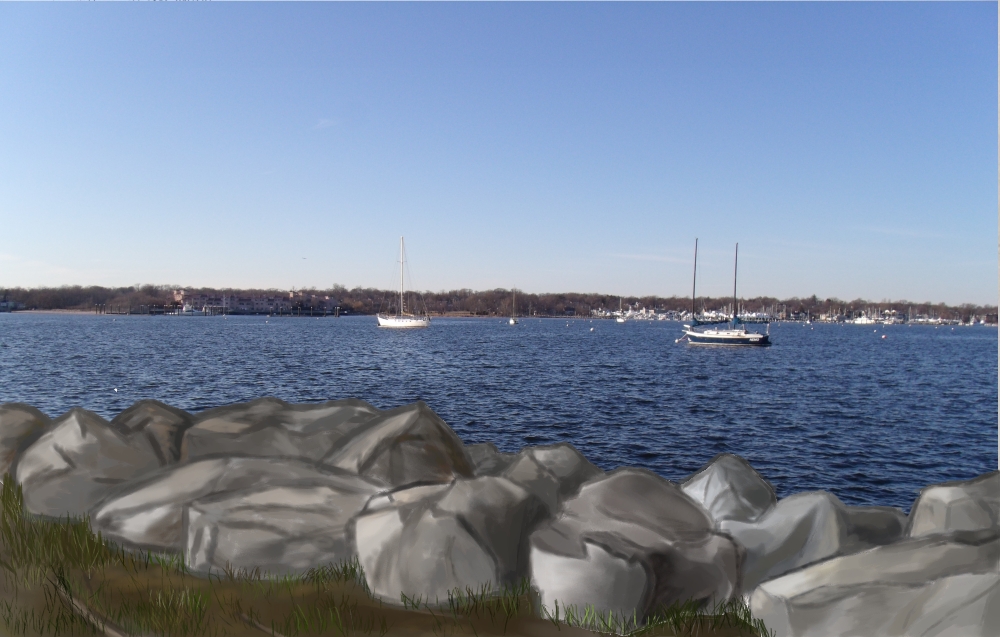Landscape 1:
For this picture, i set the photograph as one layer and my sketch as another layer over it setting an alpha channel for it. I erased the sky and the roof of the building off the sketch so that the photograph would show through. Then, using the paint tool on Gimp and different levels of opacity for each color I painted and shaded in the trunk and main branches of the tree, the fencing of the building, the stairs, and the background plants. By keeping the opacity of the colors I used relatively low, i was able to allow for the details of the sketch behind the color to still be seen. And finally i made it so the sand is half my sketch, and half the photograph by setting the eraser opacity to 50%. This allowed for the sketch of the tracks to be seen as well as the shadows of the tree and building from the photograph behind it to be seen as well. I left the majority of the columns and the trash can in its original sketch format.
Landscape 2:
For this picture I used the ocean from the original photograph as one layer. I expanded the original size of the ocean by copying and pasting what I had and used the smudge tool to blend in the lines. Then, I layered my sketch over the photo as another layer and erased the ocean so the photograph could be seen. I used the paint tool to slightly darken the edges of the ocean where it met the shore and finished the water off with the smudge tool. Finally, i used the paint tool and different shades and opacities of the colors to paint everything else in it but the sky. For the shells and branches I used 3-5 shades of gray and brown respectively to add shadow and depth. For the other items in the background, I mainly just switched up the opacity levels of the color to add shading. For the sky, I used the smudge tool to smudge out the border that was originally there but i didn’t add any color.







